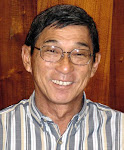Ayurveda is a holistic healing science which comprises of two words, Ayu and Veda. Ayu means life and Veda means knowledge or science. So the literal meaning of the word Ayurveda is the science of life. Ayurveda is a science dealing not only with treatment of some diseases but is a complete way of life.
Ayurveda is the ancient Indian medical science, the origin of which can be traced back to the Vedas, which are the oldest available classics of the world. Vedas are the ancient books of knowledge, or science, from India. They contain practical and scientific information on various subjects beneficial to the humanity like health, philosophy, engineering, astrology etc.
Ayurveda combines physical, psychological and spiritual therapies in an approach to health, that has addressed itself to the fundamental principles of good health and longevity. It has developed a tradition of medicine and a system of treatment based on the inherent ability of the human body to rejuvenate, to heal and to restore its natural balance.
Ayurveda is based on a system of Tridosha or Three Humours which classifies all individual constitutions of people, diseases, herbs and other non-herbal remedies and therapies according to whether they are Vata (air or nerve oriented), Kapha (water or mucoid type) or Pitta (fire type) [5] . Herbs that have pungent, sour and salty flavors stimulate fire; herbs that are astringent (drying) and bitter stimulate vata-air, or the nerve centered humour; herbs that are sweet, salty and sour stimulate or increase Kapha-water, or the mucoid humour.
In contrast, herbs that are sweet, sour and salty flavored ameliorate Vata-air, which means that they have a particular affinity for the nervous system. Herbs that are astringent, sweet and bitter ameliorate Pitta-fire, meaning that they are soothing and anti-inflammatory. Finally herbs that are pungent, bitter and astringent ameliorate Kapha-water, which means they tend to increase digestive fire, expel and dry excessive fluid build up in the system, including clearing excessive fat from the body, and the accumulation of cholesterol and other fatty deposits in the veins and arteries of the body.
This Indian system of medicine has laid down principles and methods of treatment for various diseases including chronic illnesses where there is no definite curative treatment, and symptomatic relief is the only existing treatment option.
Diagnosis
In Ayurvedic medicine, disease is always seen as an imbalance in the dosha system, so the diagnostic process strives to determine which doshas are underactive or overactive in a body. Diagnosis is often taken over a course of days in order for the Ayurvedic physician to most accurately determine what parts of the body are being affected.
To diagnose problems, Ayurvedic physicians often use long questionnaires and interviews to determine a person’s dosha patterns and physical and psychological histories.
Ayurvedic physicians also intricately observe the pulse, tongue, face, lips, eyes, and fingernails for abnormalities or patterns that they believe can indicate deeper problems in the internal systems. Some Ayurvedic physicians also use laboratory tests to assist in diagnosis.
Principles of Ayurveda
Ayurveda is bestowed upon us by our ancestors, who were eminent and wiser and having insight into our being. Basically Ayurveda is Health promotive - preventive - curative and nutritive - all self contained.
The two principle objectives of Ayurveda are :
(a.) "Swasthyas swasthya rakshanam" - To prolong life and promote perfect health ( add years to life and life to years )
(b.) "Aturasya vikar prashamanamcha" - To completely eradicate the disease and dysfunction of the body.
Ayurveda takes the individual as whole and seeks to re-establish harmony between all the constituents in the body. Perfect balance of the tripod - Mind, Body and Spirit means perfect health.
To understand Ayurvedic treatment, it is necessary to have an idea how the Ayurvedic system views the body. The basic life force in the body is prana, which is also found in the elements and is similar to the Chinese notion of chi.
In Ayurveda, there are five basic elements that contain prana: earth, water, fire, air, and ether. These elements interact and are further organized in the human body as three main categories or basic physiological principles in the body that govern all bodily functions known as the doshas. The three doshas are vata, pitta, and kapha. Each person has a unique blend of the three doshas, known as the person’s prakriti, which is why Ayurvedic treatment is always individualized. In Ayurveda, disease is viewed as a state of imbalance in one or more of a person’s doshas, and an Ayurvedic physician strives to adjust and balance them, using a variety of techniques.
Friday, July 11, 2008
Subscribe to:
Post Comments (Atom)







































No comments:
Post a Comment